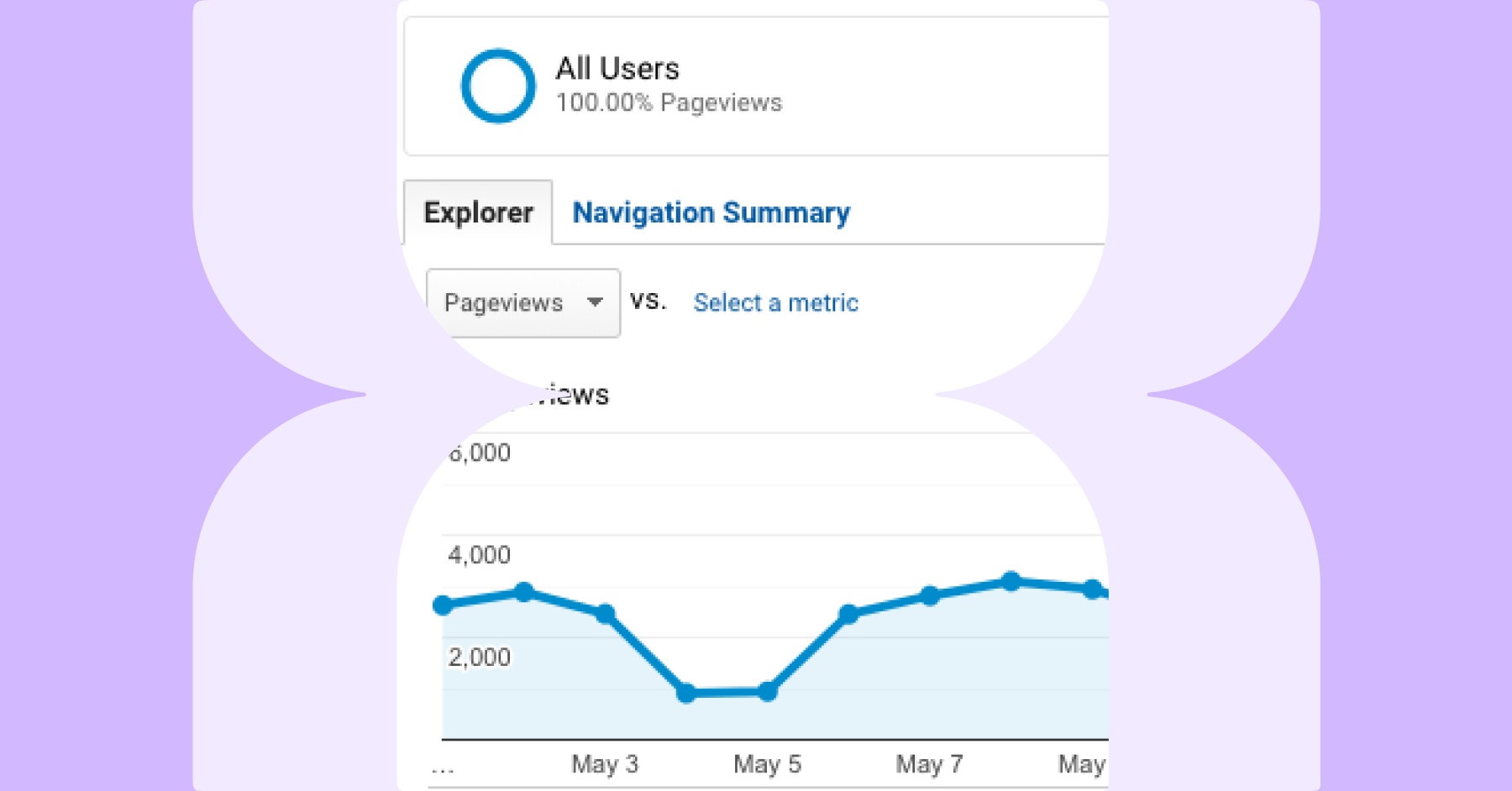Whilst email is still a very popular method of communication, applications like Slack that offer real-time communication between teams are becoming more common and often users actually prefer to receive information through these channels rather than in an email.
With the Lumar Zapier integration, you can use Zapier to create more targeted notifications in these channels. In this guide we will walk you through how to set up a Zap that sends Slack notifications with summary data when a crawl completes.
How to Access Lumar’s Zapier Integration
You can find the Lumar Zapier integration here or by searching for Lumar within Zapier.
Setting up the Trigger
Once you’re logged into Zapier click ‘Create this Zap’ to begin. Now we will setup the ‘trigger’ that activates this rule. For this use case the trigger would be: ‘New Completed Crawl Report’, so ensure that that trigger is selected and click: ‘Save + Continue’.
You will then need to connect your Lumar account to Zapier by clicking ‘Connect an Account’. This will open a new window where you will need to input your Lumar API credentials which you will first need to generate.
Note: You will only need to do this once to setup your account, after that your account will always be available on this page and you simply have to select it and click ‘Continue’.
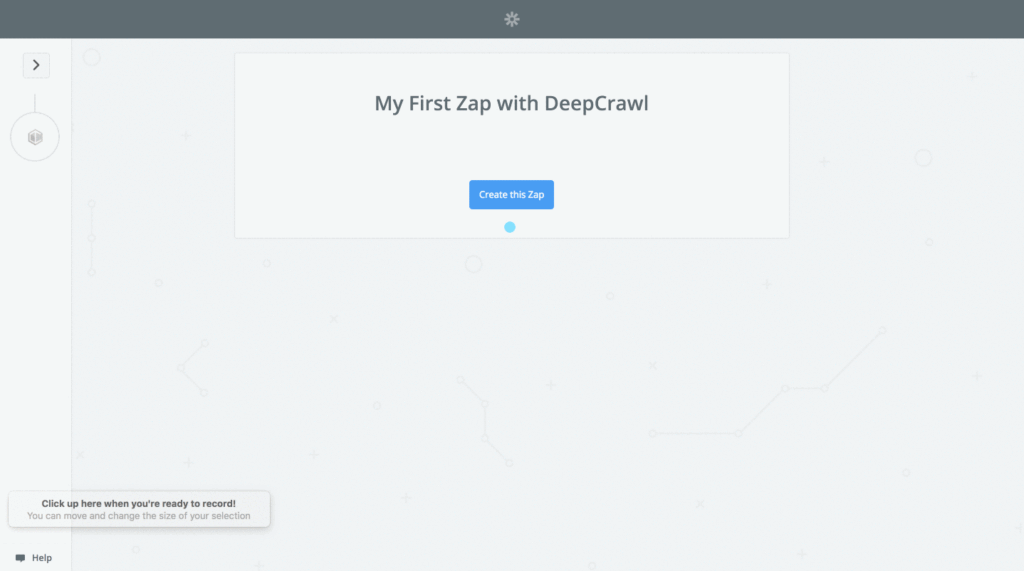
Connecting your Lumar Account
To generate your Lumar API credentials, navigate to the ‘API Access’ page in the Lumar app which can be found in the navigation menu by clicking on your account name in the top right of the page. Then, once you’re there, click on the ‘Generate New API Key’ button and a modal will appear with the token inside.
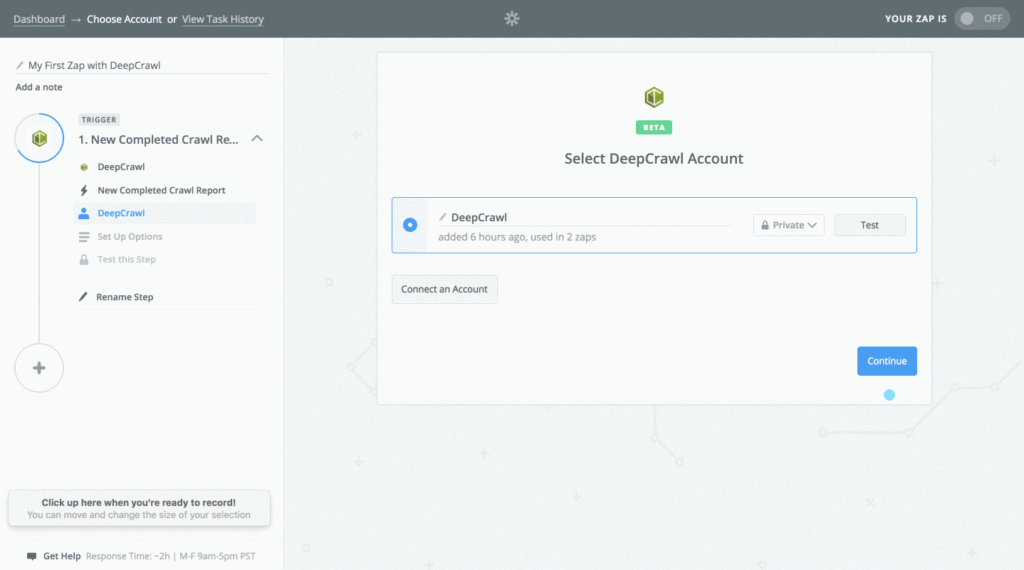
Copy the token and paste it into the ‘Token’ field in the Zapier window. Then go back to the ‘API Access’ page in Lumar app and look for the Key ID which can be found in the table. Copy the Key ID and paste it into the ‘Key ID’ field in the Zapier window and click ‘Yes, Continue’.
You’ll then be taken back to the Zapier interface where you will now see your account appear in the list. Select that account and click ‘Save + Continue’.
Setting the Options
Click the drop-down list to select your Lumar account, then select the project you want to use in this zap from the project drop-down list (you can search for a project if you find that easier).
Finally, select which Lumar reports you want to use in this Zap (you can select multiple reports using the plus button). In this example we will select Primary Pages and Non-Indexable Pages.
Now that you’ve set the options, click ‘Continue’. You will then be presented with a summary of your configuration. Click ‘Fetch + Continue’ to test that your configuration will work properly.
Provided everything was setup correctly you should see a green “Test Successful” message and you can click ‘Continue’. If you see an error message, go back to the ‘Edit Options’ screen and try again.
Setting Up the Action
Now that we have set up the trigger we can set up an Action to send the Slack notification. Using the search bar, search for the Slack app and select it. For this zap we will send a notification to a Slack channel (so that everyone in that channel will see the notification), so select ‘Send Channel Message’ and click ‘Continue’.
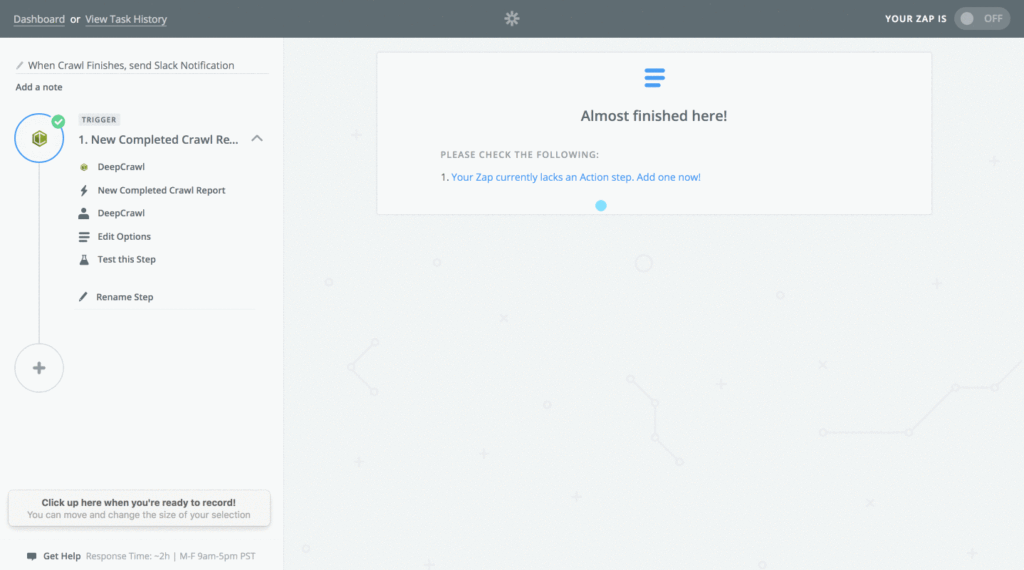
Now you will need to connect your Slack application to Zapier. To do this, simply click ‘Connect Account’ and a new window will open asking you to sign into Slack and authorize your account. Simply click ‘Authorize’ and you will be taken back to Zapier where your Slack account will now appear in the list. Select the account and click ‘Save + Continue’.
Note: Your Slack account might have restrictions on installing Slack applications – if it does you will need to get in touch with your Slack Account Admin and get authorization to do this.
You will now be able to configure how the Slack notification should look and behave. First, pick from the dropdown list which Slack channel you would like the notification to be sent to. Next, in the message field copy and paste the following template and replace {project} with the name of your project:
Your crawl for {project} has just finished!
Primary Pages:
Non-Indexable Pages:
The final step is to add in the dynamic data to be pulled from Lumar. To do this, click inside the message field and click on the plus icon on the right. Select Primary Pages Total Rows (this is the total count for the Primary Pages report, but you could also use the Added, Removed or Missing Totals if you wanted). A badge should appear with a sample number inside. Repeat this process for the Non-Indexable pages report.
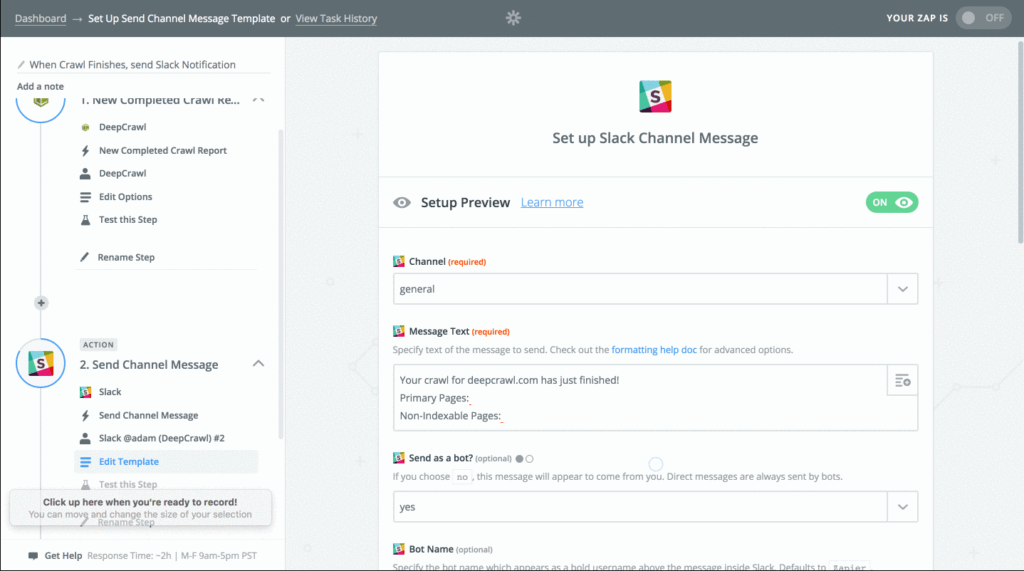
You can then explore the other optional settings for Slack if you need, otherwise scroll to the bottom and click ‘Continue’. Again, you’ll see a summary of the configuration, so click ‘Send Test to Slack’ to test that your configuration will work properly. Once you see the green ‘Test Successful’ message, click ‘Finish’ and you are done!
If you have any issues in setting up the Lumar trigger or the Slack action, don’t hesitate to drop us a message and one of our support team will be happy to assist you.



